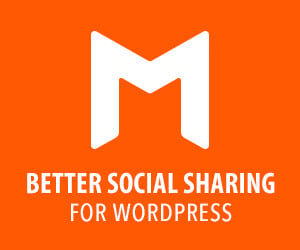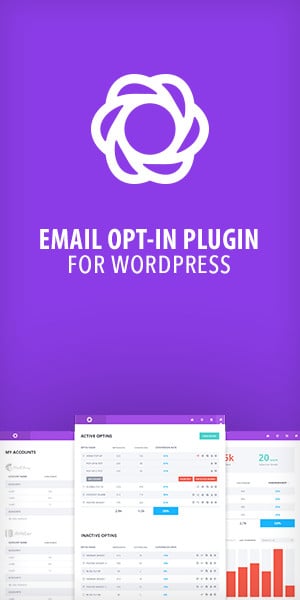Get workplace anxiety management techniques are essential for maintaining mental health and productivity, especially as studies show that nearly 40% of employees experience anxiety on the job. This post explores expert-backed strategies to manage workplace stress, including mindfulness practices, time management, and communication skills. Learn how to identify triggers, implement actionable solutions, and foster a healthier work environment. Whether you’re an employee or leader, these techniques can help build resilience and improve overall well-being. Keep reading for practical steps to effectively address workplace anxiety.
Understanding Workplace Anxiety and Its Impact
Workplace anxiety isn’t just a personal issue; it’s a silent epidemic affecting productivity and health across industries. Understanding its causes, signs, and effects can help in managing this challenge effectively.
Common Causes of Workplace Anxiety
Several factors contribute to workplace anxiety. Identifying these can be the first step towards managing them. High job demands and tight deadlines are common triggers. Employees often feel overwhelmed by unrealistic expectations and the pressure to perform.
Another significant cause is job insecurity. In today’s fast-paced world, fear of layoffs or role redundancy can be debilitating. Additionally, inadequate support from management or colleagues can make employees feel isolated, intensifying anxiety.
- Bullying and Harassment: Workplace bullying isn’t always obvious. It can include subtle actions like exclusion from meetings or undermining work. Such behavior creates a toxic environment, fostering anxiety.
- Unclear Roles: When job roles are not clearly defined, employees may struggle to understand what’s expected, leading to stress and confusion.
- Lack of Work-Life Balance: The inability to disconnect from work responsibilities can lead to chronic stress and anxiety.
- Poor Physical Work Environment: Factors like noise, lack of privacy, and uncomfortable workspaces can contribute to anxiety levels.
Understanding these root causes can pave the way for effective workplace anxiety management techniques.
Signs and Symptoms to Look Out For
Recognizing the signs of workplace anxiety is crucial for early intervention. These symptoms can manifest physically, emotionally, and behaviorally.
- Physical Symptoms: These include fatigue, headaches, and a racing heartbeat. Frequent illness or digestive issues are also common indicators.
- Emotional Signs: Anxiety often brings about feelings of dread, irritability, and helplessness. Employees may experience mood swings or difficulty concentrating.
- Behavioral Changes: Withdrawal from social interactions, increased absenteeism, and a decline in work performance are notable signs.
- Increased Errors: An anxious mind struggles with focus, leading to mistakes and subpar work quality.
- Avoidance Behavior: Individuals may avoid specific tasks or situations, hoping to escape triggers.
Early detection of these symptoms is essential for implementing workplace anxiety management techniques.
The Effects of Workplace Anxiety on Productivity and Health
Workplace anxiety not only impacts mental health but also has far-reaching effects on productivity and overall well-being.
Anxiety often leads to decreased efficiency. Employees who are constantly worried struggle to focus, resulting in missed deadlines and reduced output. This inefficiency can cause a ripple effect, affecting team dynamics and project completion.
Moreover, prolonged anxiety can lead to burnout. Burnout is characterized by severe exhaustion, cynicism, and detachment. It affects not just the individual but the entire organization by increasing turnover rates and healthcare costs.
- Impact on Physical Health: Chronic anxiety can manifest as physical health issues, such as cardiovascular disease, weakened immune function, and chronic pain.
- Mental Health Consequences: Anxiety can escalate into depression, causing long-term effects on mental health and creating a negative cycle that’s hard to break.
- Influence on Work Relationships: Anxious employees often struggle with communication, leading to misunderstandings and tension among colleagues.
Understanding these impacts highlights the importance of early intervention and effective workplace anxiety management techniques.
Expert-Backed Techniques to Manage Workplace Anxiety
Managing workplace anxiety requires a multifaceted approach. These expert-backed techniques are designed to help employees navigate stress with ease and confidence.
Mindfulness Practices to Reduce Stress at Work
Mindfulness is a powerful tool for reducing workplace anxiety. By focusing on the present moment, employees can manage stress and enhance emotional wellbeing.
- Breathing Exercises: Simple breathing techniques can help calm the mind. Deep breathing reduces stress hormones and promotes relaxation.
- Meditation: Regular meditation encourages a balanced mental state. It enhances focus and reduces anxiety by training the mind to remain calm under pressure.
- Mindful Breaks: Short, frequent breaks can help employees reset and recharge. Encouraging brief walks or stretching can improve mood and productivity.
- Gratitude Journaling: Writing down positive experiences can shift focus from stressors to strengths, fostering a positive mindset.
Incorporating these mindfulness practices can be a cornerstone of effective workplace anxiety management techniques.
Time Management Strategies to Prevent Overwhelm
Effective time management is essential for controlling workplace anxiety. By organizing tasks and priorities, employees can reduce stress and improve efficiency.
- Prioritize Tasks: Using tools like Eisenhower’s Matrix helps determine what’s urgent and important, ensuring focus on high-priority tasks.
- Set Clear Goals: Clear and realistic goals provide direction and motivation, preventing overwhelm and confusion.
- Use Technology Wisely: Tools like calendars and task management apps can help schedule tasks efficiently, ensuring deadlines are met comfortably.
- Break Tasks into Smaller Steps: Large projects can be daunting. Breaking them into manageable tasks can make them more approachable and less stressful.
Proper time management is a crucial element of workplace anxiety management techniques, helping employees feel more in control and less pressured.
Effective Communication Skills to Address Workplace Concerns
Clear communication is vital in alleviating workplace anxiety. Addressing concerns openly can prevent misunderstandings and build a supportive environment.
- Active Listening: Engaging in active listening fosters understanding and empathy, reducing anxiety related to miscommunication.
- Assertiveness Training: Being able to express thoughts confidently can help employees address concerns without fear, reducing anxiety.
- Feedback Culture: Encouraging a healthy exchange of feedback can help identify issues early and foster a more open and supportive workplace.
- Non-Verbal Communication: Understanding body language and tone can enhance communication, preventing potential conflicts and anxiety.
Developing these communication skills is fundamental to effective workplace anxiety management techniques, promoting a healthier work environment.
Building a Supportive Workplace Environment
Creating a supportive workplace environment is essential in addressing workplace anxiety. Leaders and peers play a crucial role in fostering mental wellness and reducing stress.
How Leaders Can Foster a Culture of Mental Wellness
Leaders have the power to shape workplace culture. By prioritizing mental wellness, they can significantly reduce workplace anxiety.
- Open Dialogue: Encouraging conversations about mental health can reduce stigma and make employees feel supported.
- Training and Education: Providing resources and training on mental health awareness can empower employees to manage stress effectively.
- Lead by Example: Leaders who practice work-life balance and stress management set a positive example for their team.
- Access to Resources: Providing access to mental health resources, such as counseling, can offer tangible support to employees.
Leaders who prioritize mental wellness contribute significantly to effective workplace anxiety management techniques.
Encouraging Peer Support and Team Collaboration
Peer support and team collaboration can create a more inclusive and less stressful workplace environment.
- Team Building Activities: Regular activities can foster camaraderie and trust, strengthening team dynamics and reducing anxiety.
- Mentorship Programs: Pairing employees with mentors can provide guidance and support, enhancing confidence and reducing stress.
- Open Communication Channels: Encouraging open communication among peers can foster a sense of belonging and reduce feelings of isolation.
- Shared Goals: Aligning team goals can create a sense of purpose and motivation, reducing anxiety-inducing competition.
Encouraging peer support and collaboration is a vital component of effective workplace anxiety management techniques.
Implementing Flexible Work Policies to Reduce Stress
Flexible work policies can be a significant factor in reducing workplace anxiety. They offer employees the ability to balance work with personal responsibilities.
- Remote Work Options: Allowing remote work can reduce commute stress and provide a more comfortable work environment.
- Flexible Hours: Providing flexible work hours can help employees manage personal commitments, reducing stress and anxiety.
- Job Sharing: Allowing two employees to share a role can reduce workload and stress, providing a balanced approach to job responsibilities.
- Compressed Workweeks: Offering the option to work longer hours for fewer days can give employees extended periods to recharge.
Conclusion
Implementing flexible work policies is a forward-thinking approach to effective workplace anxiety management techniques, supporting a healthier work-life balance.
Get Workplace anxiety negatively impacts productivity, health, and relationships, making early identification and management essential. Common causes include high job demands, lack of work-life balance, unclear roles, and job insecurity. Effective strategies include mindfulness practices, time management, clear communication, and fostering a supportive workplace environment.
Leadership actions, peer support, and flexible work policies play significant roles in reducing stress and promoting mental wellness. Addressing workplace anxiety requires proactive techniques to enhance employee well-being and organizational efficiency.
FAQ
What are effective strategies to manage workplace anxiety?
Implementing regular breaks, using stress management techniques, and setting clear boundaries can reduce workplace anxiety. Prioritizing tasks and seeking support from colleagues also help in managing stress efficiently.
How can mindfulness help reduce anxiety at work?
Mindfulness improves focus and reduces stress by encouraging present-moment awareness. Techniques like deep breathing and meditation can lower anxiety levels and enhance emotional well-being at work.
What are healthy coping mechanisms for job-related stress?
Exercising regularly, maintaining a balanced diet, and engaging in hobbies are vital for managing job-related stress. Talking to a therapist or seeking peer support can offer additional relief.
How does communication in the workplace impact anxiety levels?
Clear communication reduces misunderstandings and lowers stress. Encouraging open dialogue and active listening fosters a supportive work environment, minimizing anxiety.
Can workplace anxiety affect overall productivity, and how can it be addressed?
Workplace anxiety can decrease productivity and lead to burnout. Addressing it involves promoting a healthy work-life balance, providing resources for mental health, and encouraging supportive leadership.
What role does time management play in minimizing work-related anxiety?
Effective time management reduces stress by ensuring tasks are completed on time. Creating a prioritized to-do list and avoiding multitasking can help maintain focus and decrease anxiety.




